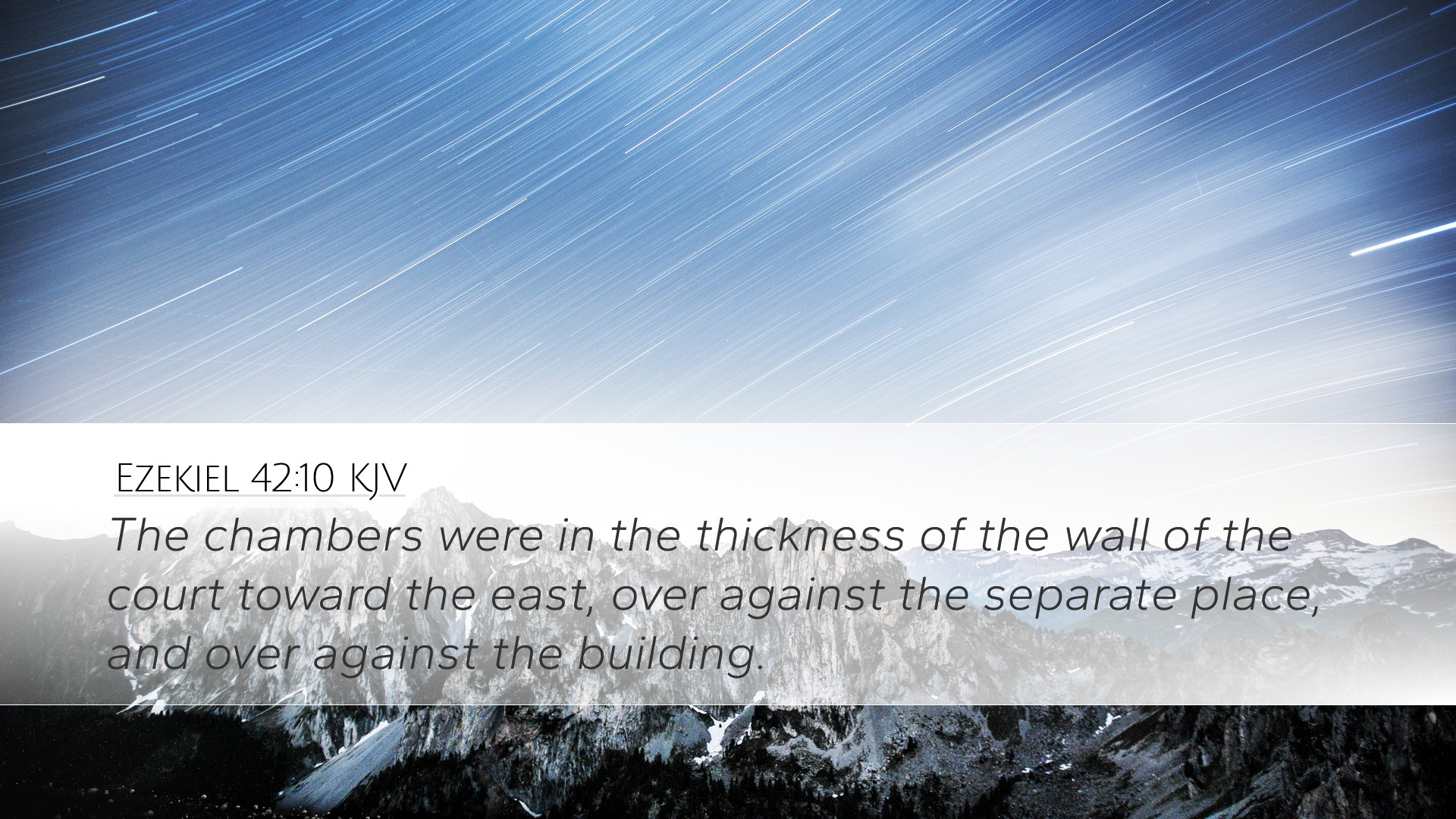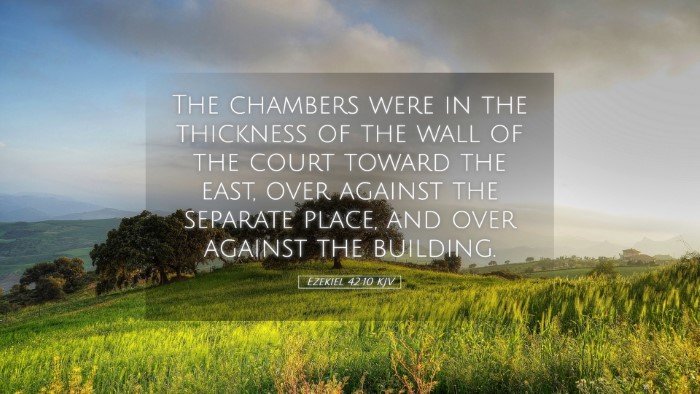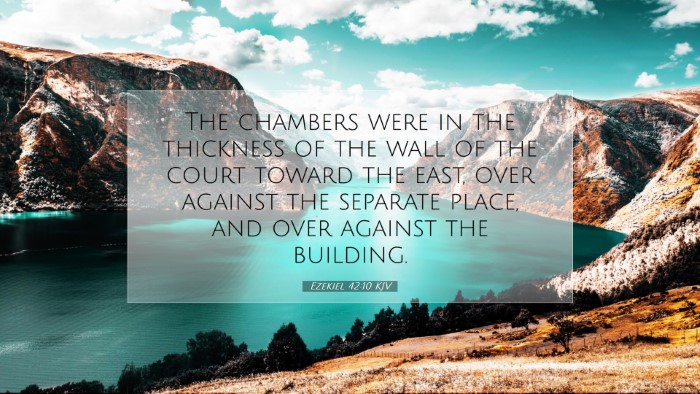Ezekiel 42:10 Commentary
Bible Verse: "In the thickness of the wall of the court toward the east, before the separate place, and before the building, were chambers." (Ezekiel 42:10)
Introduction
This verse is part of a broader vision given to Ezekiel, detailing the structure and layout of the temple and its surrounding areas. It is essential to approach this text with a focus on the significance of the chambers and the architectural nuances unearthed in this prophetic revelation. The commentaries from renowned biblical scholars illuminate the deeper meanings and implications of this verse for understanding the sacred space God ordained for worship.
Interpretative Insights
-
Matthew Henry's Commentary:
Henry discusses the chambers in relation to the entirety of the sanctuary, emphasizing that they played a vital role in the temple's function and organization. He reflects on how these chambers served various purposes, including preparation for sacrifices and possibly lodging for the priests. Furthermore, Henry points to the meticulous nature of God's instructions as indicative of His desire for order and reverence in worship.
-
Albert Barnes' Notes:
Barnes provides detailed observations on the layout and construction observed in this verse. He interprets the chambers within the temple area as reflecting God's accessibility to His people. These separate compartments suggest a division of sacred tasks, where different chambers were designated for preparing offerings and matters of ritual holiness. Barnes underscores the concept of separation in this verse, indicating that God is intimately involved in the human experience, providing places for worship, preparation, and reverence.
-
Adam Clarke's Commentary:
Clarke approaches this verse with particular attention to the symbolic representation of these chambers. He points out that they indicate a transition from the outer court to the inner sanctuary. The structured nature of these chambers illustrates the importance of gateways and barriers in approaching God, which Clarke sees as a metaphor for spiritual access. He sheds light on the theological implications—how these physical structures symbolize the believer's journey towards divine communion.
Theological Implications
The chambers mentioned in Ezekiel 42:10 can be interpreted beyond their physical attributes. They signal important theological truths regarding worship, accessibility to God, and the organization of the people’s relationship with the Divine. Here are some reflections on the theological implications:
-
Order in Worship:
Each chamber had a designated function, emphasizing the importance of order within the house of the Lord. God’s instructions bestowed a framework that reflects divine authority and the necessity for holiness in worship practices.
-
God’s Presence:
The physical arrangement of the temple and surrounding areas could be seen as a representation of God’s presence abiding among His people. The chambers signify spaces where divine encounters can occur, inviting believers to draw near, knowing that God has made provision for their worship.
-
Separation and Holiness:
The mention of chambers before a separate place speaks to the theme of holiness. These distinctions underline the need for purity as one approaches God. This serves as a foreshadowing of the New Testament revelation of Christ, who now invites believers into direct fellowship with God.
Practical Applications
The insights gleaned from Ezekiel 42:10 provide numerous applications for contemporary life and ministry:
-
Value of Preparation:
Just as the chambers were places of preparation, believers today are called to be prepared in their hearts for worship. This can include prayer, confession, and seeking to align one's life with God's will before entering into His presence.
-
Creating Sacred Spaces:
The concept of sacred spaces is vital. Pastors and leaders can follow the example established in Ezekiel by creating environments conducive to worship, teaching, and community, whether through physical spaces or arrangements in worship services.
-
Encouraging Order in Worship:
Underlining the importance of structuring worship thoughtfully can enhance the congregational experience and guide them toward a deeper understanding of God’s holiness and presence.
Conclusion
Ezekiel 42:10 serves as a reminder of the significance of both structure and symbolism in the life of faith. The detailed descriptions of the temple and its chambers highlight God's desire for His people to approach Him with reverence and intentionality. Insights from notable commentaries enhance our understanding of this verse, bridging the ancient text with modern applications dedicated to enhancing our worship experience.


